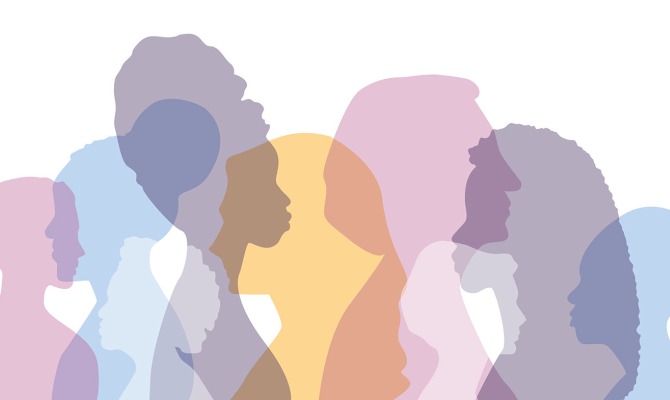
5 minute read
May She Be Well
AMISHA SINGH, DDS
She is a woman. Red lipstick and stilettos may be her superpower or perhaps she favors her favorite pair of worn sneakers and a ponytail. Either way, she is a force to be reckoned with. She walks through the world, in many ways, making it turn, being a mom, a wife, a daughter, a business owner, a friend, a confidante, an advocate. She may run out of words before she runs out of hats she wears. Her determination is fierce. Her power is undeniable. But how many systemic barriers has she faced by the time she downs her breakfast smoothie and runs out the door? How many sharp corners has she maneuvered through the course of her life, silently and instinctively? Have you noticed the second skin she wears like a cloak, working so efficiently and navigating so gracefully, that the systemic inequities just fade like a shadow into the background?
This world was certainly not built for her. When it comes to anything from her clothes, to her car, to her razor, the product was not designed with her as the end user in mind. The clothing industry has influenced her relationship with her body for generations. She has yearned for pockets for most of this time. Christian Dior said in 1954, “Men have pockets to keep things in, women for decoration.”1 The crash test dummy used to proclaim the safety of the car she drives was likely outfitted to match the standard male build and size. She is 73% more likely to be injured in an accident than her male counterpart.2 By the time she reaches adulthood, she has seen tens of thousands of images which dictate how her body should look.3 She is three times more likely to have an eating disorder than a man.5 Her hips are too wide, her configuration all wrong, no matter if you ask the magazines she reads or the company that manufactured her car. She pays more for common essential items, a discrepancy known as the “pink tax” on everything from razors to deodorant and shampoo.4
At work, she gets paid 77 cents for every dollar her male counterpart earns.6 Only 12 countries in the world give her the same legal employment rights as a male.7 Nationally, she takes 10 times the amount of personal leave to care for family obligations and she spends an average of an extra two hours per day doing things like cleaning, carpooling, cooking, laundering, parenting, helping family and more. At work, she gets 44% more requests than her male co-worker to volunteer for “non-promotable” tasks at work and she says yes 76% of the time (compared to 51% of the time by men).8 All of this adds up to what is otherwise known as “invisible work.” She is underrepresented in government, in the C-suite and in leadership.4 She faces discriminatory hiring practices globally. When she retires, she is more than twice as likely as a man to live in poverty. Though her entire life, she is 35% more likely to be poor than a man.10
She pays twice as much on average for healthcare every year and yet faces poorer patient outcomes.11 She waits longer in emergency rooms, is seven times more likely to be misdiagnosed when having a heart attack, and is 60% more likely to die after being dismissed from the hospital due to errors in follow-up care.12 She experiences medication side effects twice as often as a man because drugs are designed for male bodies and women are disproportionately excluded from clinical trials.4 Cardiovascular disease, COVID-19, cancer, and reproductive health all have higher mortality rates for her because she is a woman.13 She is twice as likely to suffer from depression in her lifetime. Even her safety is more precarious; one in five of her have experienced rape or attempted rape in their lifetime.14 She also faces a higher incidence of sexual harassment, workplace violence, domestic violence, sexual exploitation and human trafficking.4 Globally, she has less access to education, is more likely to suffer from chronic hunger and starvation, and is more likely to be a child laborer. At the current rate of change, it is estimated that it will take over 200 years to achieve gender equality, just in the USA.9
And yet, she rises. She persists. She finds ways to thrive. But we owe her more. She is a woman. Hear her now. Her wellness can no longer be an afterthought. She stands before us, and she demands to be made whole. Let us start with the wellness of her mind, body and soul. Let us redesign this world so she finally belongs.
References
1. https://www.mic.com/articles/133948/the-weird-complicated-sexist-history-of-pockets
2. https://www.cnn.com/2022/12/15/world/female-car-crash-test-dummy-spc-intl/index.html
3. https://time.com/6098771/instagram-body-image-teen-girls/
4. https://www.marieclaire.com/politics/news/a15652/gender-inequality-stats/
5. https://centerfordiscovery.com/blog/get-the-facts-eating-disorder-statistics/
6. https://www.gao.gov/products/gao-23-106041#:~:text=For%20example%2C%20in%202021%3A,18%20 cents%20on%20the%20dollar).
7. https://www.humanrightscareers.com/issues/causes-gender-inequality/)
8. https://www.huffpost.com/entry/invisible-work-women-office_n_624c4effe4b0d8266ab18824
9. https://www.equalitycantwait.com/
10. https://www.epi.org/publication/women-over-65-are-more-likely-to-in-poverty-than-men/
11. https://www.americanprogress.org/article/the-economic-educational-and-health-related-costs-of-being-awoman/
12. https://www.everydayhealth.com/womens-health/women-with-chest-pain-wait-longer-for-emergency-carethan-men/
13. https://www.uspharmacist.com/article/selected-womens-health-disparities#:~:text=Cardiovascular%20 disease%2C%20COVID%2D19%2C,further%20contribute%20to%20health%20disparities.
14. https://www.projecthope.org/women-carry-an-undue-mental-health-burden-theyshouldnt-have-to/05/2021/?utm_source=googlegrants&utm_medium=cpc&utm_ term=women%20health&utm_campaign=Paid&gclid=CjwKCAiArNOeBhAHEiwAze_ nKEWOsLdl5dzV9Agjv1PniMlRBOgzuCv7dHGwxqpdFMsCOeaYqtaJrBoCdKIQAvD_BwE







